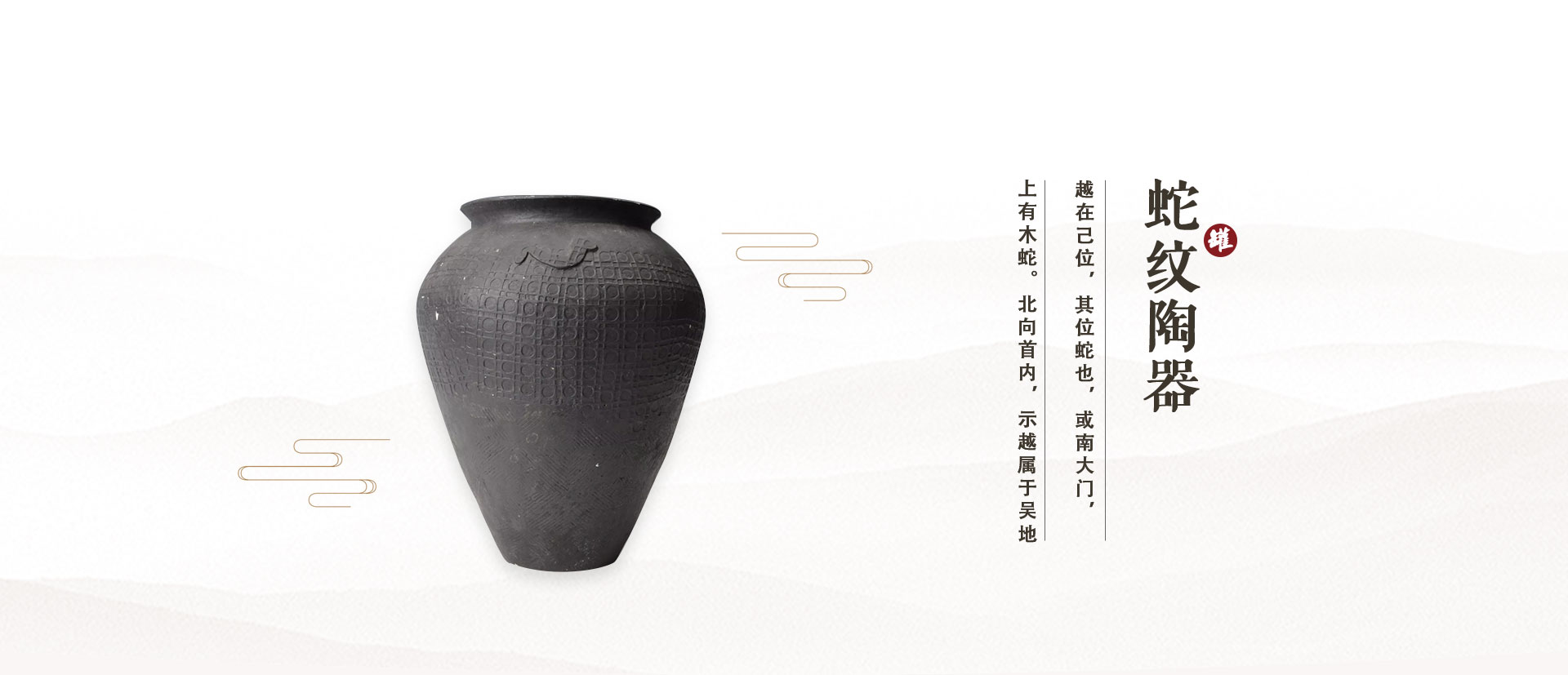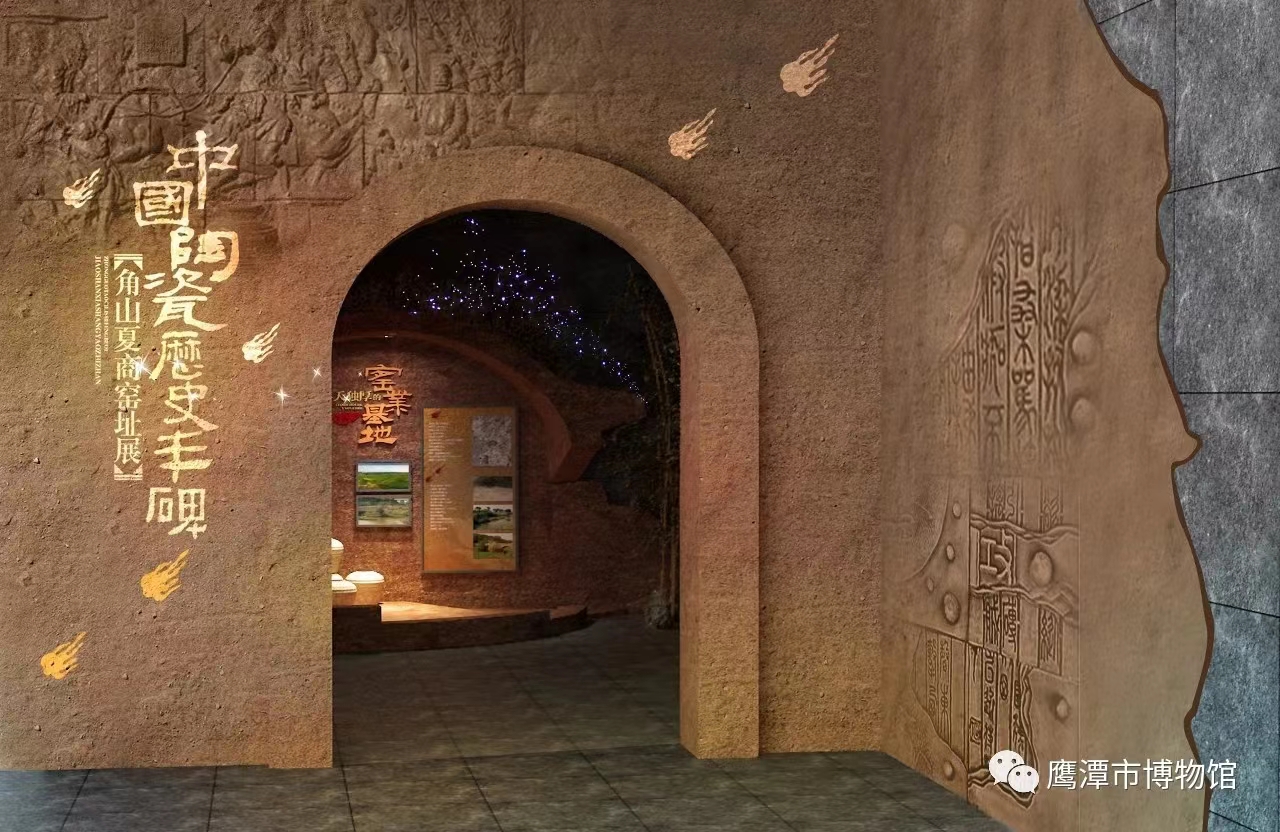
角山(板粟山)遗址位于鹰潭市区以东7公里的月湖区童家镇徐家村,面积达7万平方米。从1983年至2005年,先后对其进行了5次考古发掘,在揭露的1500余平方米范围内,就出土了完整和可复原造型奇特的石器、陶器、原始瓷质器皿等1500余件,揭露了龙窑、马蹄形窑、烧成坑、陈腐池等重要遗迹50余处,发现神秘的刻划符号250余个。是我国迄今为止发现时间最早的贸易性质的专业陶器生产基地,在中国陶瓷史上写下了辉煌篇章。
The site of Jiao Shan (Banli Shan) is located in Xujia Village, Tongjia Town, Yuehu District, which is 7 km east of Yingtan City, with an area of 70,000 square meters. From 1983 to 2005, five archaeological excavations were carried out and more than 1,500 pieces of complete and recoverable peculiar stone implements, pottery andproto-porcelain vessels were unearthed, more than 50 important remains such as dragon kilns, horseshoe-shaped kilns, burning pits and aging pools were uncovered, and more than 250 mysterious carved symbols were discovered within an area of more than 1,500 square meters. It is the earliest professional trading pottery production base of trade nature found in China so far, which has written a glorious chapter in the history of Chinese ceramics.
陶器是人们日常生活使用的主要器具,它有着多方面的实用功能。远古时期的人类生产工具简陋,生产力低下。而陶器的出现使人们开始进入熟食时代,这标志着人类定居与聚落生活的开始,也标志着文明的创造与传播。
With many practical functions, pottery is the main utensil used in people's daily life. In ancient times, human production tools were rudimentary and the productivity was low. The emergence of pottery ushered people into the era of cooked food, which marked the beginning of human settlement and settlement life, as well as the creation and spread of civilization.
角山窑址是中国历史上最早的一个大窑场,也是中国先秦时代延续时间最长的窑场,红红火火连续烧造时间达800年之久,这是鹰潭人奉献给人类的一份陶瓷文化厚礼。
Jiaoshan kiln site is the earliest large kiln site in China's history, and it is also the longest kiln site in China's Pre-Qin period. With a continuous burning of 800 years, it is a great gift of ceramic culture to human-beings from Yingtan people.
角山窑厂之所以能够成为当时最大的商业制陶基地,得益于它得天独厚的自然资源。它处于狭长的童家河二级台地上,周边丘陵起伏,提供了制陶时使用的燃料松柴,原有的一条古河道注入信江,既保证了制陶用水,又为陶器的生产外销提供了水运上的便利。而角山窑址还有一个突出的优势,高岭土。高岭土的土质坚硬,适宜制陶。这就是当时制陶所使用的陶土原料和高岭土,角山窑场是中国首先使用高岭土与普通粘土掺合原料的窑场。角山窑场之所以能够烧造原始瓷器,很大一部分就是因为角山的高岭土资源。在普通黏土中掺入高岭土,可以大大增强陶胚的刚性。
Thanks to its unique natural resources, Jiaoshan kiln factory was able to become the largest commercial pottery-making base at that time. It’s located on the second-level platform of the long and narrow Tongjia River with rolling hills around it, which provides the enough pine as the firewood used in pottery making, and an original paleochannel injected into Xinjiang River, which not only ensures water for pottery making, but also provides convenient water transportation for pottery trading. There is also another outstanding advantage of Jiaoshan kiln--Kaoline. With the hard soil quality, Kaoline is well suited to pottery making. Here is the raw materials of clay and kaoline used in pottery making at that time. It is worth mention that Jiaoshan kiln was the first kiln in China to use kaoline mixed with ordinary clay in pottery making.Jiaoshan Kiln was able to make proto-porcelain is mainly due to the local Kaoline resources. By mixing kaoline with ordinary clay, the rigidity of the greenware can be greatly enhanced.
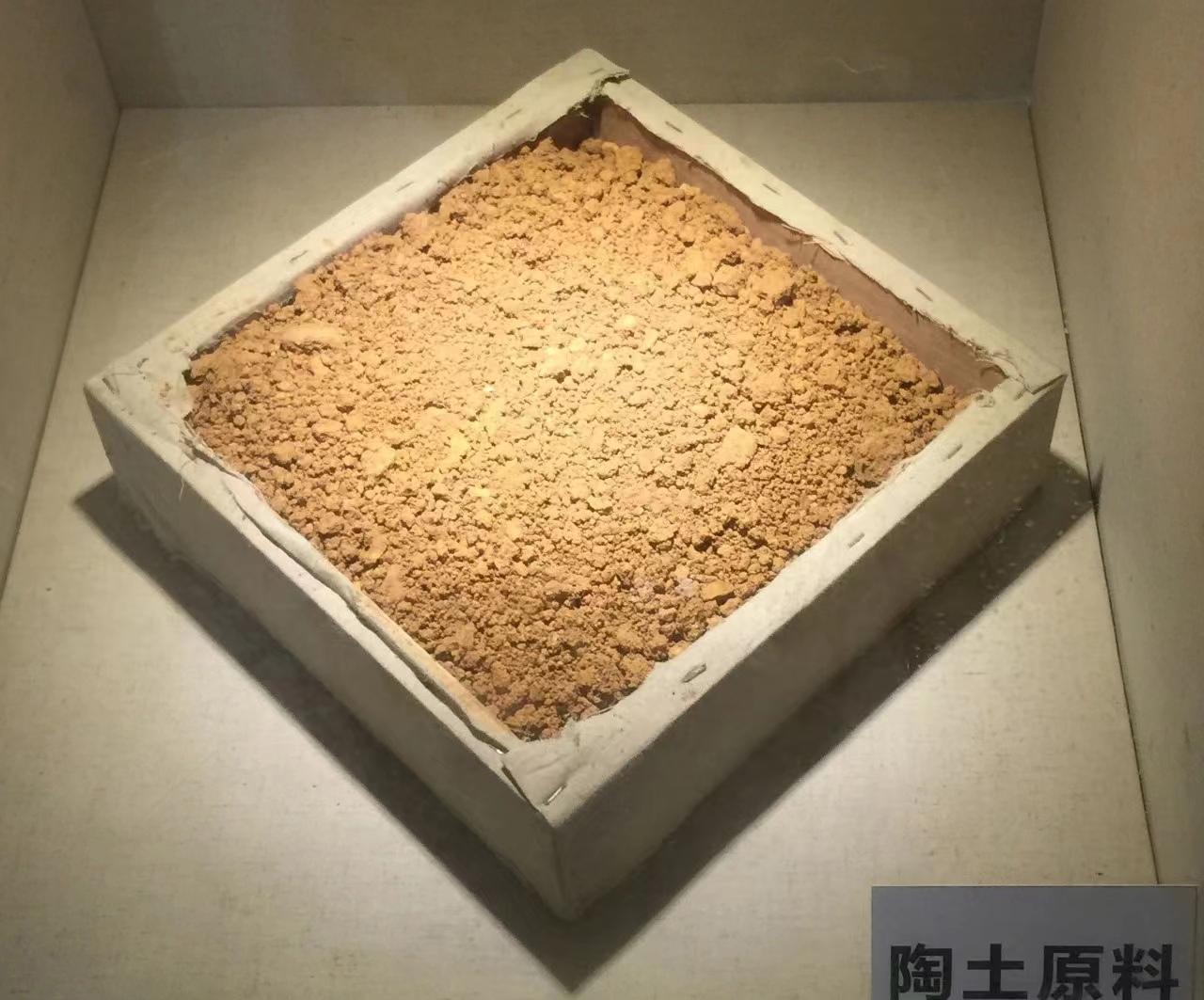
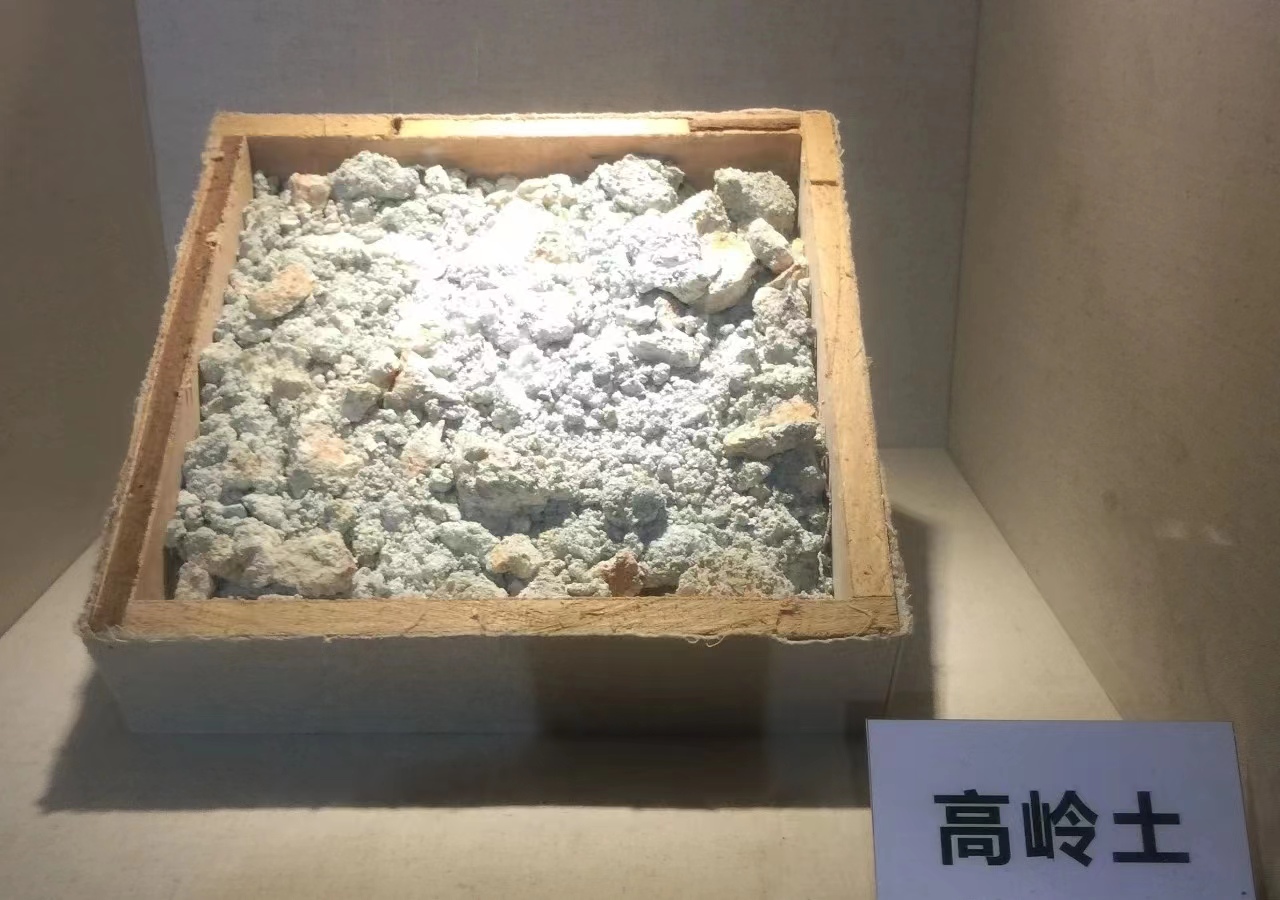
角山窑址生产的陶器造型别致,多种多样,涵盖了生活的方方面面。这里展示的是一组甗形器,大家能猜到它是什么用途吗?它是古时的一种烹饪器具,分成上下两部分,上部为甑,盛放需要蒸的食物,甑底有一穿孔的箅,以利于水蒸气的通过;下部用于盛水沸腾加热,它的作用就相当于我们现在所用的蒸锅。
The pottery produced at Jiaoshan kiln site is unique in shape and diversified, covering all aspects of life. Shown here is a set of Yan-shaped pottery, can you guess what it is used for? It is an ancient cooking apparatus and it is divided into two parts, at the upper part was Zeng, which contained food to be steamed. Zeng has a perforated grate at the bottom to facilitate the passage of water vapor; the lower part was used to hold the water and boil it, and it served the same purpose as the steamer we use today.
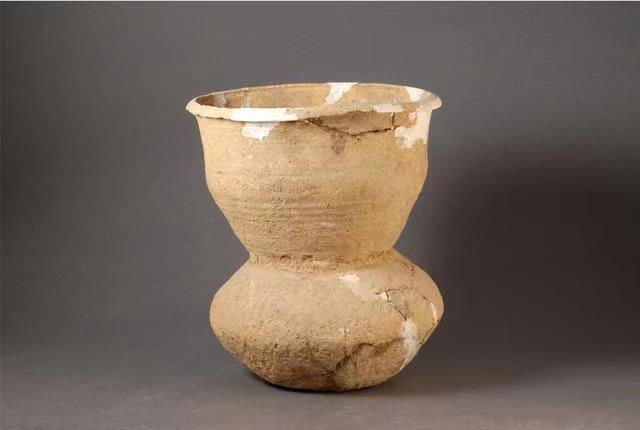
甗形器下方是一组粗糙的陶支架。具有支座功用,可以用来支撑甗形器,于下方引火加热。同时,它还起着支烧具的作用,在窑炉内用于支撑烧制成型的陶坯,不仅让陶坯更好地堆放和陈列,而且在烧制器物时,把陶坯支托到最佳的窑位上,可以使陶坯在窑内更好地均匀受热成型。陶支架的发现及确定,证明了角山商代窑址的窑业技术已达到相当的水平,窑工们不仅注意烧成空间的充分利用,还注意到窑位的选择对不同产品烧成起重要作用。
Below Yan is a group of rough pottery support, which can be used to support Yan and heating below. At the same time, it also plays the role of support, which is used to support the formed greenware. The support not only allows the greenware to be better stacked and displayed, but also allows the greenware to be placed in the best position so as to make the greenware to be better formed and more evenly heated in the kiln.
The discovery and identification of the pottery support proved that the Jiaoshan’s skill in the utilization of kiln at the Shang dynasty had reached a considerable level. Jiaoshan’s kiln man not only paid attention to the full use of firing space, but also noticed that the choice of positioned place in kiln played an important role in the pottery making.
这是陶釜和陶罐。可以用来贮藏食物,陶器发展到夏商时代,在中原地区仍是以承袭软质灰陶为主。而角山窑厂更是凭借这种高质量的陶器占领市场,迅速成为当时中国的龙头制陶基地。
Here is the pottery kettle and pottery pot, they can be used to store food. When pottery developed into the Xia and Shang dynasty, soft gray pottery still was the mainstream pottery type in Central Plains region. Thus, Jiaoshan kiln factory was able to occupied the market with this high quality pottery and quickly became the leading pottery making base in China at that time.
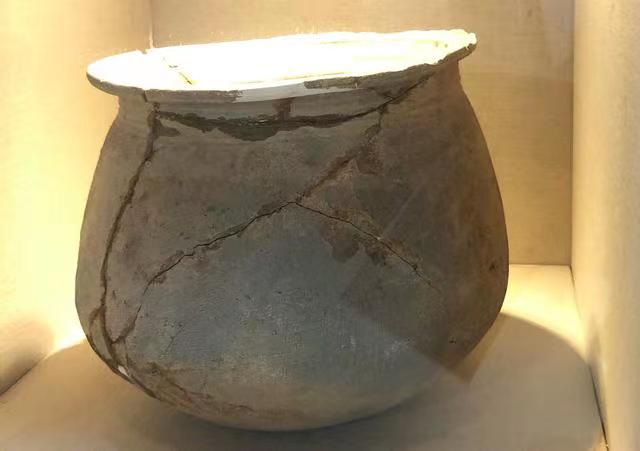
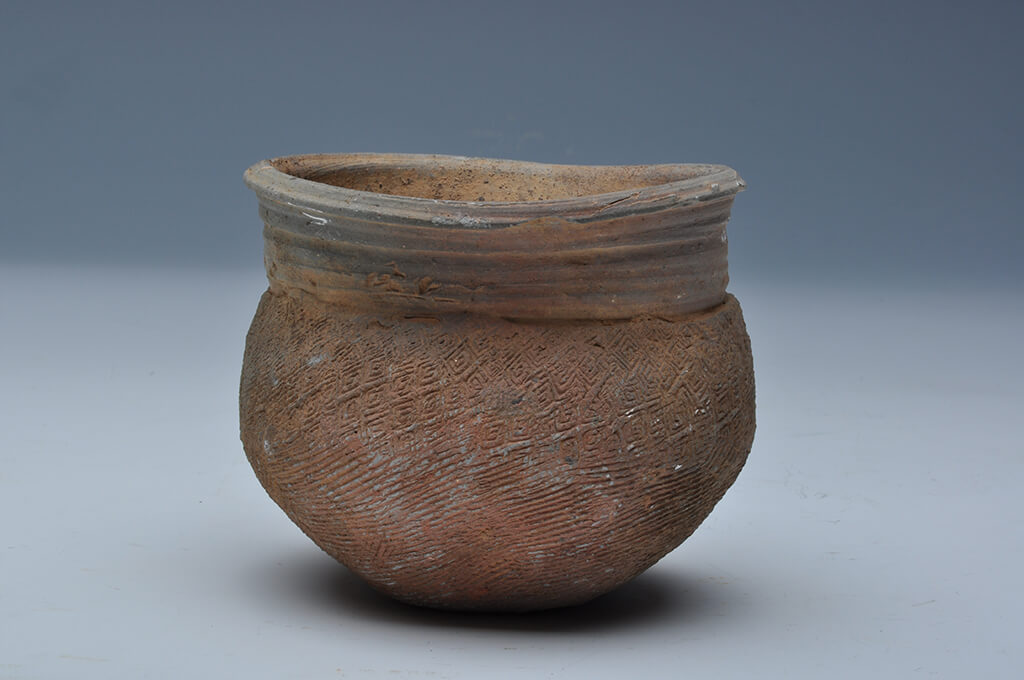
陶器时代为青铜时代的泥范铸造提供了有力的技术支撑。角山器物无论从制作、陶质、器形、纹饰等方面考察,都是商时期江南的一种独特文化类型。因此,角山遗址的发据为研究江南地区的青铜文化提供了可资对比的材料。中国考古学泰斗苏乘琦先生曾说:“角山遗址的发现,活了闽赣一大片地区的青铜文化。”
The Pottery Age provided powerful technical support for the clay mould casting in the Bronze Age. Jiaoshan artifacts are a unique cultural type of Jiangnan area during the Shang period, regardless of their production, pottery quality, shape, and ornamentation. Therefore, the discovery of the Jiaoshan site provides comparable materials for the study of the bronze culture in the Jiangnan area. Mr. Su Chengqi, a leading Chinese archaeologist, once said, "The discovery of the Jiaoshan site has brought life to the bronze culture of Fujian and Jiangxi region."

